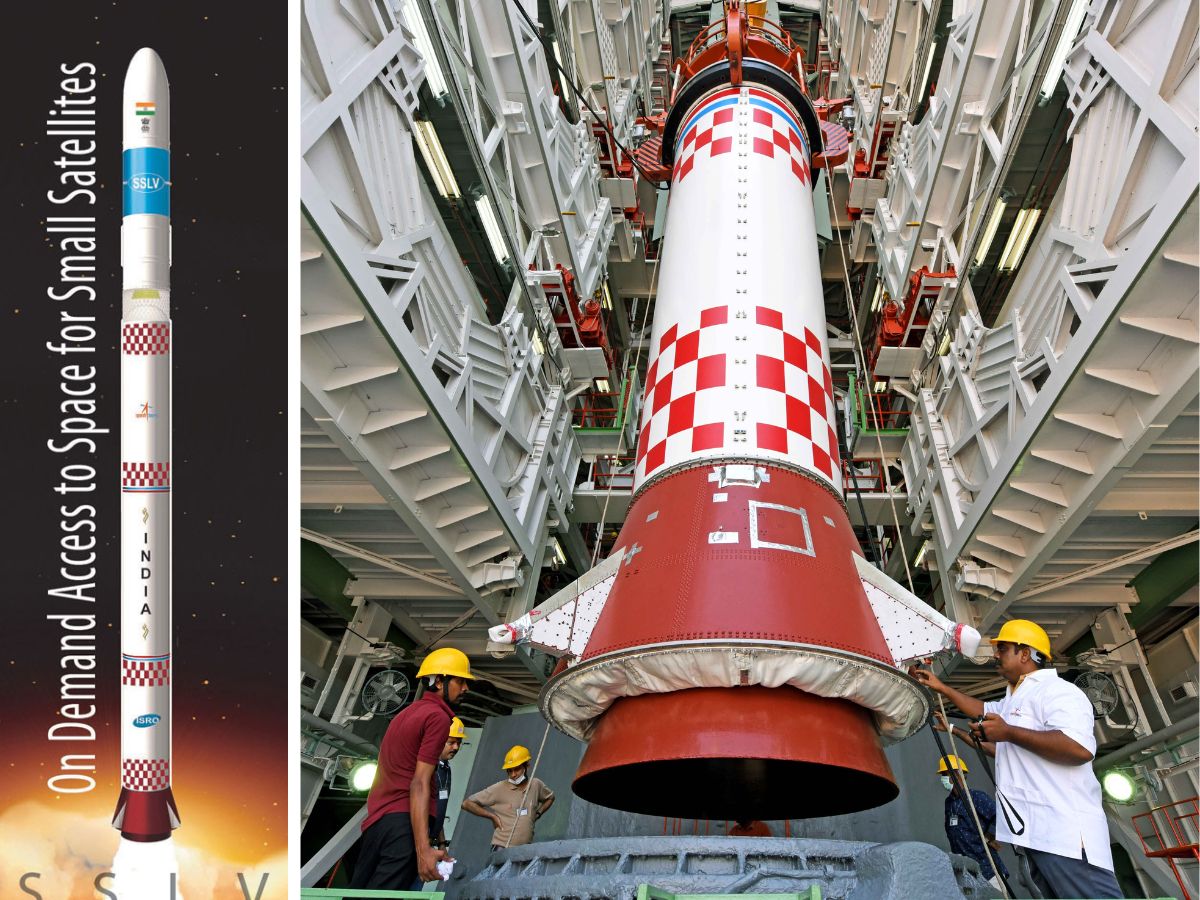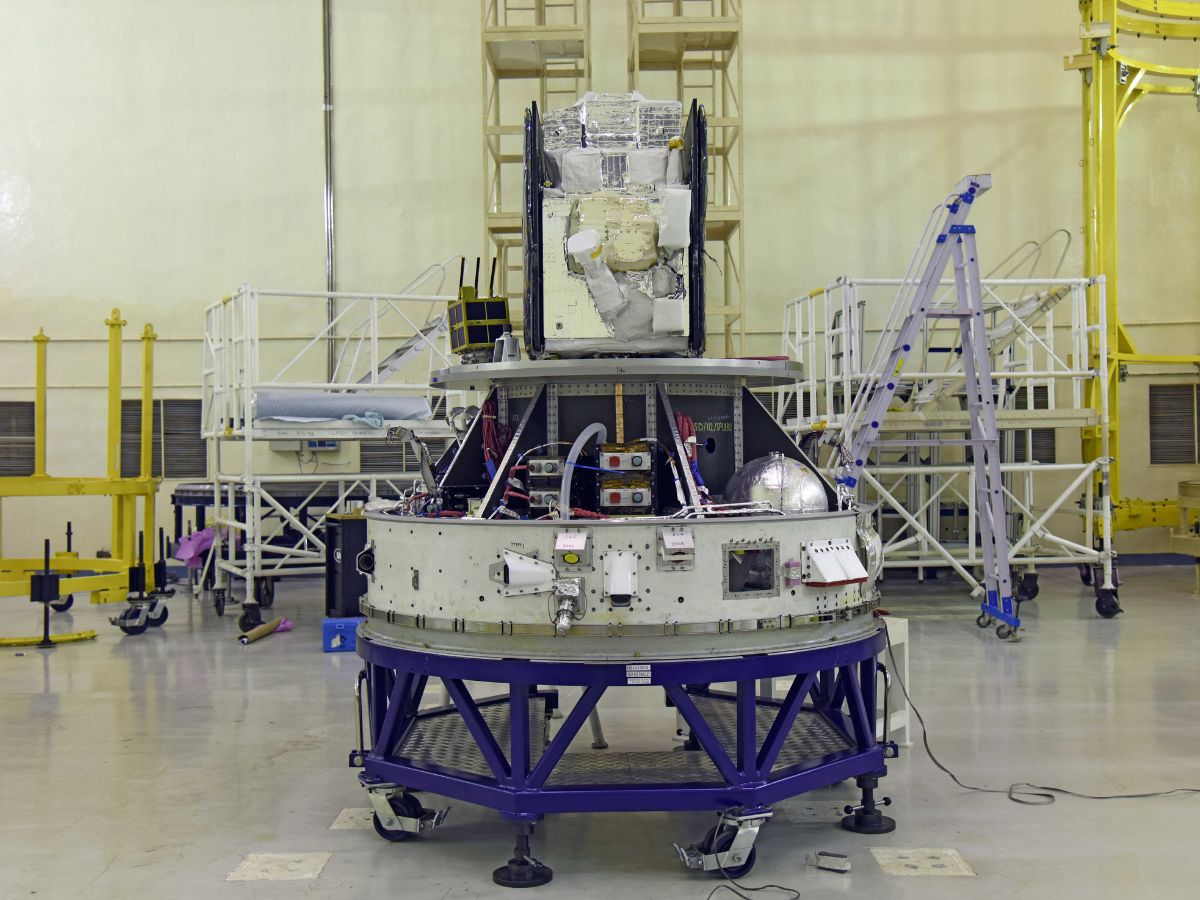ISRO's Maiden SSLV-D1 Mission Launched, Carries Satellite AzaadiSAT Developed By Students
SSLV-D1 Mission: The Indian Space Research Organisation (ISRO) launched the maiden flight of its smallest launch vehicle on Sunday, August 7, 2022, carrying Microsat 2A and AzaadiSAT as payloads.

SSLV-D1 Mission: The Indian Space Research Organisation (ISRO) launched the maiden flight of its smallest launch vehicle on Sunday, August 7, 2022. The Small Satellite Launch Vehicle (SSLV) took flight from First Launch Pad, Satish Dhawan Space Centre in Sriharikota, Andhra Pradesh, at 9:18 am IST.
The mission, called SSLV-D1, is the first developmental flight of the launch vehicle.
The primary payload of SSLV is an Earth Observation Satellite called Microsat 2A or EOS-02. A satellite named AzaadiSAT was also launched into space as a co-passenger on India's latest launch vehicle.
The launch vehicle will also unfurl the Indian tricolour in space to commemorate 75 years of India's independence.
After the successful maiden flight of SSLV, ISRO Chairman S. Somanath said that SSLV-D1 performed as expected at all stages. He said that each stage performed and separated.
Somanath further said that in the terminal phase of the mission, some data loss is occurring.
"We are analysing the data and we will come back on the status of the satellites as well as the vehicle performance soon," Somanath added.
SSLV-D1/EOS-02 Mission: Maiden flight of SSLV is completed. All stages performed as expected. Data loss is observed during the terminal stage. It is being analysed. Will be updated soon.
— ISRO (@isro) August 7, 2022
ISRO developed SSLV to cater to the emerging global small satellite launch services market. SSLV has the capability to launch on demand.
ISRO's smallest launch vehicle can launch up to 500-kilogram satellites to low-Earth orbit.
Microsat 2A is a 135-kilogram satellite launched to a 350-kilometre planar orbit. It is a small Earth observing satellite developed by ISRO as a test payload for the maiden launch of SSLV.
AzaadiSAT is an 11-kilogram satellite built by 750 girl students from 75 schools across India.
All About SSLV
The Small Satellite Launch Vehicle (SSLV) is a three-stage launch vehicle configured with three solid propulsion stages and a terminal stage. A solid propulsion rocket stage uses solid propellants as the fuel. The terminal stage is a liquid propulsion-based Velocity Trimming Module (VTM).
The first, second, and third stages weigh 87 tonnes, 7.7 tonnes, and 4.5 tonnes respectively.

The Velocity Trimming Module (VLT) is equipped with a payload adapter. The first, second, and third stages are known as SS1, SS2, and SS3, respectively.
According to ISRO, SSLV has a diameter of 2.1 metres and a length of 34 metres. The liftoff mass of the launch vehicle is approximately 120 tonnes.
The key features of SSLV are low cost, flexibility in accommodating multiple satellites, 'launch on demand' feasibility, low turnaround time (the time taken to complete a process), and minimal launch infrastructure requirements.
SSLV has multiple satellite mounting options for nanosatellites, micro satellites, and mini satellites. The launch vehicle can carry a single satellite weighing up to 500 kilograms to a 500-kilometre planar orbit.
SSLV can carry payloads weighing up to 300 kilograms to Sun-synchronous orbit (SSO).
According to Gunter's Space Page, the first stage of SSLV is related to the Agni-3 and Agni-5 IRBM (Intermediate-range ballistic missile) motors, but has a new design.
SSLV carried Microsat 2A and AzaadiSAT as payloads as part of the SSLV-D1 mission.
All About EOS-2
EOS-2 is a small Earth observing satellite developed by ISRO as a test payload for the maiden launch of SSLV. The satellite, also known as Microsat 2A, is based on Microsat-TD, which was also an Earth observing satellite. Microsat-TD was India's 100th satellite in space, and had the capacity to capture images at night.
EOS-2 is expected to meet the increasing user demands of cartographic applications, and facilitate urban and rural management, coastal land use and regulation, mapping of utilities, and other geographic information system (GIS) applications, according to Gunter's Space Page. Cartography is the art of drawing maps.

EOS-2 carries two instruments, namely MWIR (Mid-Wave Infrared) and LWIR (Long-Wave Infrared) cameras.
The mass of Microsat 2A is 142 kilograms. The satellite will be placed into orbit at an altitude of 350 kilometres above sea level. The mission life of EOS-2 is 10 months. It will be powered by two deployable solar arrays.
EOS-2 will be placed into the Sun-synchronous orbit.
Earlier this year, Dr Jitendra Singh, Union Minister for Science and Technology, said in a written reply to the Rajya Sabha that EOS-02 is a technology demonstration satellite for various new technologies with applications that include agriculture, forestry, geology, miniaturised power electronics, hydrology, and reaction wheels, among others.
The satellite will carry out advanced optical remote sensing operations in infrared bands with high spatial resolution. Optical remote sensing makes use of infrared sensors to do images of the Earth's surface by detecting the solar radiation reflected off targets on the ground. Spatial resolution refers to the size of one pixel on the surface of Earth.
EOS-02 was slated for launch in 2021, but the mission was delayed due to the Covid-19 pandemic.
All About AzaadiSAT
AzaadiSAT is an eight-kilogram CubeSat built by 750 girl students from 75 schools across India. The satellite, which was launched into orbit as a co-passenger satellite on SSLV, carries 75 different payloads each weighing around 50 grams.
The payloads include long range communication transponders, an ultrahigh frequency-very high frequency (UHF-VHF) transponder, and selfie cameras that will click pictures of its own solar panels.
The UHF-VHF transponder works in ham radio frequency, and will enable voice and data transmission for amateur radio operators. A ham radio, also known as an amateur radio, makes use of the radio frequency spectrum for non-commercial exchange of messages, private recreation, and emergency communication. The CubeSat is also equipped with a radiation counter to measure the ionising radiation in its orbit
The AzaadiSAT project is part of the Azadi Ka Amrit Mahotsav celebrations. Azadi Ka Amrit Mahotsav is an initiative by the Government of India to celebrate and commemorate 75 years of India's independence.
AzaadiSAT has a mission life of six months. The project is expected to encourage girl students to take up STEM (Science, Technology, Engineering, and Mathematics) subjects.
The satellite has been developed by Space Kidz India, an aerospace organisation creating young scientists for the country. The AzaadiSAT project is a first-of-its-kind space mission with an 'all women concept' to promote 'Women in STEM', a statement released by Space Kidz India said.
Last month, Rifath Sharook, the chief technology officer at Space Kidz India, said on Twitter that the AzaadiSAT project is a special mission in which the organisation provided 750 girl students the training to build 75 experimental payloads.
He further said that the students were provided with components and training to build basic sensors which can measure different space parameters.
AzaadiSAT will enable low cost access to space in the future. The students are also building their own ground station to receive signals from the satellite.
Related Video
Southern Rising Summit 2024: How Important is Self-Awareness? Insights from Anu Aacharya | ABP LIVE
Top Headlines






































